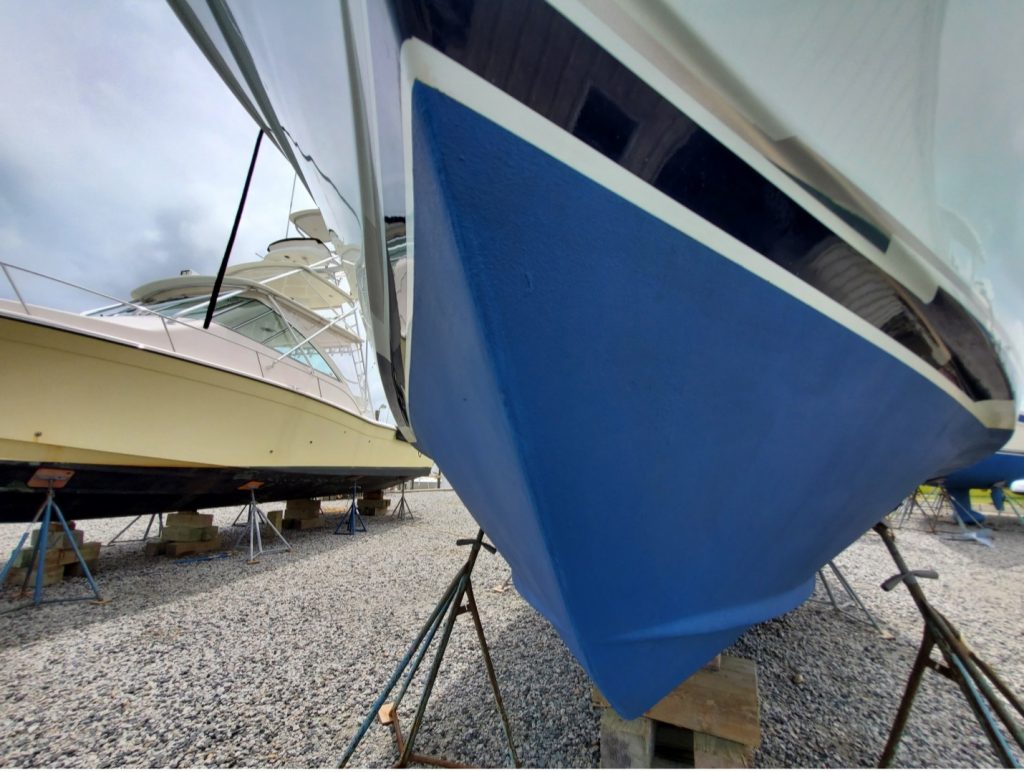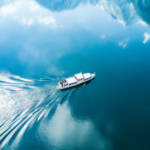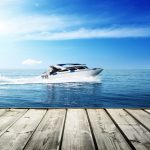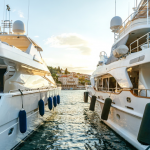As a boat owner, being pulled to the ocean’s depths by a big sea monster is certainly the last thing on your mind. But make no mistake; there are some extremely horrible animals hiding underneath the waves.
Zebra mussels, acorn barnacles, and slime-causing bacteria are microscopic sea creatures that create considerable hull drag, as well as a financial drain from high fuel and repair expenses. They do not come at you swinging fierce tentacles, at least not ones you can see, so you might not even realize they’re there until it is too late.
What you will notice — and want to avoid — is the unsightly, filthy, slimy mess they leave on the base of your hull, which reduces your speed and raises your fuel expenditure by forcing your engine to work harder. A clogged hull bottom is also highly dangerous because it reduces your maneuverability.
To have a smoother sailing, fight all the biofouling bottom huggers with the right paint for it. If you are looking to paint the bottom of your boat and you need recommendations on the best paints to use, you can visit: https://www.jjsboatservices.com/best-boat-bottom-paint for assistance.
This article will discuss some important steps to choosing the right paint as well as some benefits attached.
Components Of An Antifouling Paint
Antifouling bottom paint is used to keep hard biofouling species like barnacles, mussels, and tubeworms from clinging to your hull below the waterline, as well as soft growth like algae and weeds.
There are a variety of antifouling coatings on the market, and new ones are being developed regularly, making it difficult to pick the perfect one for your budget and boat. Some coatings are more effective in certain environments, such as salt or freshwater. Some biocides are better for the environment than others, and some cost more depending on the level of biocide and the level of protection they provide.
The main antifouling component in these products is a chemical that prevents hard marine growth. An algaecide is included in some antifouling coatings to inhibit soft growth.
Biocide fundamentals: Copper has been effectively utilized to prevent barnacles from attaching to hull bottoms for ages. Cuprous thiocyanate or cuprous oxides are the two types of copper most typically used in antifouling coats nowadays. Cuprous thiocyanate also has the advantage of having a lighter copper color, resulting in brighter and more true-to-life hues. Cuprous thiocyanatepigments also require half the quantity of copper as the traditional, heavier cuprous ones.
Basics of algaecide: If you operate your boat in areas where algae, slime, and grass development on the base of your hull is common, you will need antifouling paints that contain an algaecide. Some products used to contain an algaecide called Irgarol, however, this is no longer the case. Irgarol was phased out due to its long-term persistence in the environment and negative impacts on marine life. Many antifouling bottom coatings now contain zinc pyrithione, a slime-fighting ingredient.
Vinyl and Teflon bottom coatings are pricey, dry fast, and cure to a really thin film, making them suitable for freshwater environments where algae is a concern. Vinyl paints are hard pigments that can be burnished smooth for racing, and they’re very good in saltwater, albeit not as good as ablative paints at fighting biofouling organisms. Instead of antifouling, Vinyl and Teflon bottom coatings are employed to improve performance, such as in race boats.
It is also recommended that you get more information about antifouling painting before using it.
Types of Antifouling Bottom Paint
Here are some common types:
Hard Bottom
This pigment dries hard and remains that way, unlike ablative ones, which wears away over time. It works flawlessly while the boat is in the water, regardless of how fast the boat is moving, and then ceases to function when all of the copper biocides have been leached away. This means that the covering may still be in good condition, however, the biocide is gone, and the protection is gone as well. Water can infiltrate through the hull’s exposed layer and cause damage.
Ablative Bottom
As water runs under the hull due to use or tidal motions, the ablative bottom pigment eventually fades away. With the wearing away of the paint, a fresh pulse of biocide is exposed, preventing biofuels from clinging to the surface. There are pigments that are good for numerous seasons and some that are just good for one.
Single-season ablatives are usually less expensive than those that are used for numerous reasons. Because most paints require motion to function well, it’s preferable to utilize your vessel on a regular basis.
Hybrid
Hybrid, often known as semi-hard ablative paints, are precisely what you would expect. They are a hybrid of ablative and hard pigments, combining the advantages of both in a single product.
These can produce a smooth yet firm surface that resists organism development while also allowing for higher speeds and more haul-outs without compromising protection.
Benefits Of Painting The Bottom Of Your Boat With Antifouling Paint
When a boat is left in the water for extended periods of time, bottom pigment inhibits the spread of organisms that stick to the hull and can impact the vessel’s performance, speed, and durability. You might not require bottom paint if you do not have that issue. Antifouling bottom paint is often applied below the waterline and has a flat, dull surface.
If you do not have a growth problem and just want a good polish on your boat’s bottom, try topside pigment or Gelcoat for modest water exposure, or an aluminum coat without antifouling ingredients.
These are some relevant tips to guide you. If you need tips on how to prepare your boat for antifouling painting, you can watch this video.
Conclusion
Overall, if you plan on spending the bulk of your time on the water, bottom painting should be a regular aspect of your boat’s servicing. This will keep your hull from accumulating unwanted marine algae that can harm your boat’s hull, as well as assist with extending its lifespan and improving fuel economy.
We hope that this article answered some of the questions that you may have had.








